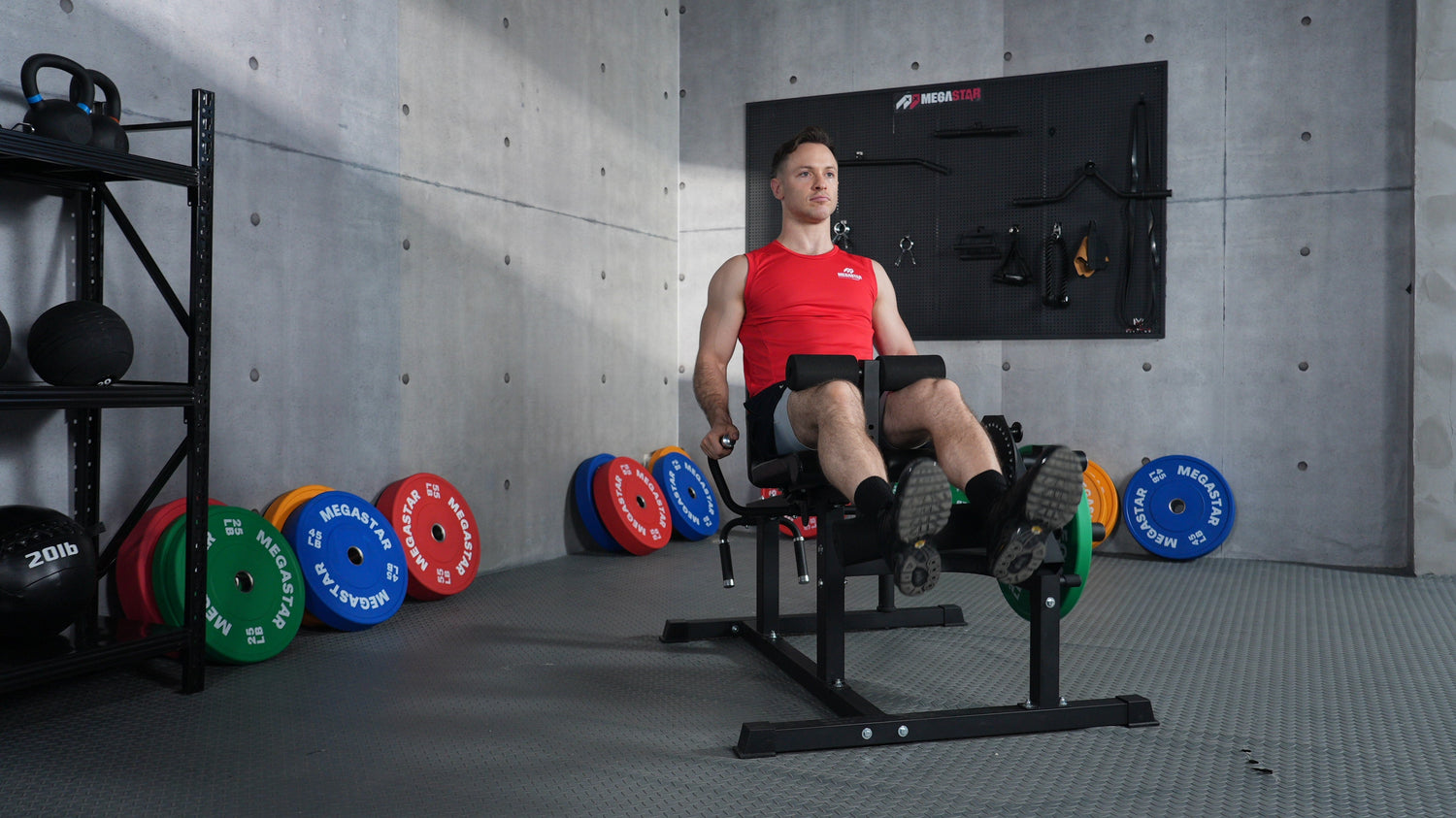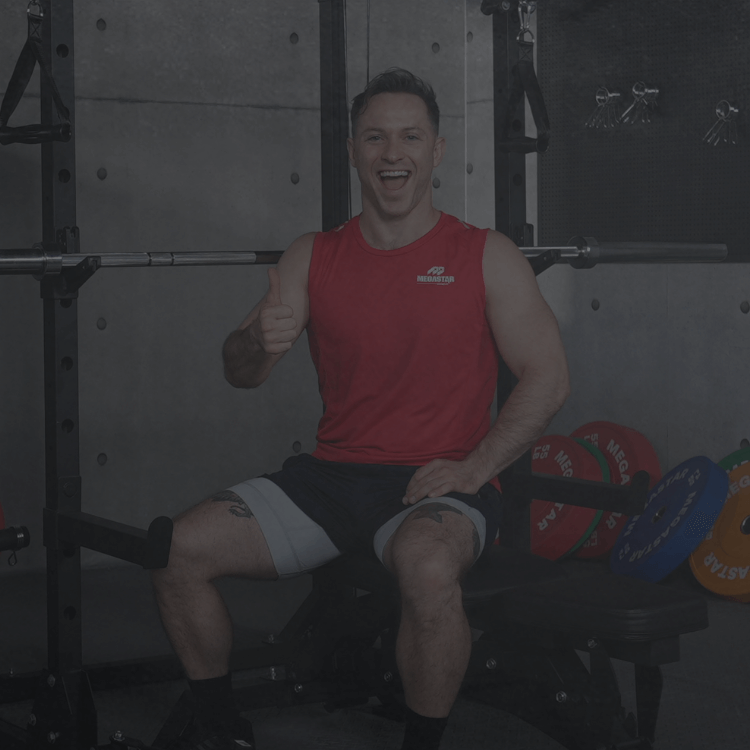When it comes to leg workouts, two exercises often come up in conversation: the leg extension and the leg curl. While they might seem similar at first glance, they target different muscle groups and offer distinct benefits. If you're trying to decide which exercise to include in your routine, it's essential to understand the differences between them. This article will break down the key differences, help you understand the benefits of each, and guide you on how to incorporate them into your workout plan safely.
Understanding the Leg Extension vs Leg Curl Difference
What Are Leg Extensions?
Leg extensions are an isolation exercise that primarily targets your quadriceps, the large muscles at the front of your thighs. To perform this movement, you'll typically sit on a machine with your knees bent at a 90-degree angle. You then extend your legs straight, using the quadriceps to push against the weight. This movement mimics the action of straightening your leg and is great for building quad strength and muscle definition. Leg extensions are particularly beneficial if you're looking to strengthen your knees or improve your overall leg aesthetics.
What Are Leg Curls?
On the flip side, leg curls focus on your hamstrings, the muscles at the back of your thighs. To perform leg curls, you'll either lie face down or sit on a machine, with your legs extended. The movement involves bending your knees and bringing your feet toward your glutes, which works your hamstrings. Leg curls are fantastic for improving hamstring strength and flexibility, and they’re crucial for preventing injuries and enhancing performance in activities like sprinting and jumping.
Key Differences Between Leg Extensions and Leg Curls
Targeted Muscle Groups
The most significant difference between leg extensions and leg curls is the muscle group they target. Leg extensions focus on the quadriceps, while leg curls target the hamstrings.
-
Leg Extensions: These exercises help build strength and size in the quadriceps, which are crucial for straightening the knee and stabilizing the leg during various movements.
- Leg Curls: This exercise strengthens the hamstrings, which are responsible for bending the knee and stabilizing the leg when running or jumping.
Both exercises are important for creating balanced muscle development, which is essential for overall leg strength.

Movement Patterns and Mechanics
Another key difference lies in the movement patterns. Leg extensions involve knee extension, which means straightening your legs. This targets the quadriceps as they contract to extend the knee.
In contrast, leg curls involve knee flexion, or bending the knee. The hamstrings contract to bring your feet toward your glutes. Both exercises require movement at the knee joint, but the direction of the movement and the muscles involved are different.
Why These Differences Matter in Your Routine
Understanding the differences between these two exercises is essential for building a balanced leg workout routine. If you're looking to improve knee extension strength, leg extensions are a must. On the other hand, leg curls are crucial for building hamstring strength and improving knee flexion, which is vital for athletic performance and injury prevention. Incorporating both exercises ensures you're not neglecting one muscle group while focusing on another.
Pros and Cons of Leg Extensions vs Leg Curls
Benefits of Leg Extensions
-
Quad Strength: Leg extensions are excellent for building strength in the quadriceps, which is particularly beneficial for activities that require knee extension, such as cycling, running, or kicking.
-
Knee Rehabilitation: Leg extensions are often used in physical therapy to help strengthen the quadriceps after a knee injury or surgery.
-
Easy to Perform: Since leg extensions are an isolation movement, they are simple to execute, even for beginners.
Drawbacks of Leg Extensions
-
Knee Joint Stress: Leg extensions can place significant strain on the knee joint, especially if the movement is performed with heavy weights or improper form. This is a concern for those with existing knee problems.
-
Limited Muscle Activation: While effective for isolating the quads, leg extensions don’t engage other stabilizing muscles, so they should be combined with compound movements for more complete leg development.
- Risk of Locking the Knee: If you extend the leg fully, there's a risk of locking the knee joint, which can lead to injury if done repeatedly with heavy weights.
Benefits of Leg Curls
-
Hamstring Strength: Leg curls are fantastic for strengthening the hamstrings, which are crucial for preventing injuries and enhancing athletic performance.
-
Injury Prevention: A strong set of hamstrings can help prevent common injuries, especially in activities like sprinting or jumping.
- Improved Flexibility: Regularly performing leg curls can improve flexibility in the hamstrings, which can contribute to better posture and movement patterns.
Drawbacks of Leg Curls
-
Lower Back Strain: If not performed correctly, leg curls, particularly in seated or lying positions, can cause strain on the lower back. Proper form and engaging the core are essential to avoid this.
-
Limited Quad Activation: While leg curls focus on the hamstrings, they don't target the quadriceps, which means you’ll need to incorporate other exercises for complete leg development.
- Machine Dependency: Leg curls are machine-dependent, which means they might not be as accessible if you don’t have the right equipment or are working out at home.
How to Safely Perform Leg Extensions and Leg Curls
Both leg extensions and leg curls are simple exercises, but proper form is crucial to avoid injury and get the most out of the movements.
-
For Leg Extensions: Avoid locking your knees at the top of the movement, as this can put unnecessary stress on the joint. Instead, focus on controlled movements and use a weight that challenges you without compromising your form.
- For Leg Curls: Keep your back pressed firmly against the bench to avoid straining your lower back. Engage your core to stabilize your body and control the movement as you curl your legs toward your glutes.
Which Should You Choose? Leg Extension vs Leg Curl for Your Goals
So, which exercise should you choose for your workout routine? If your goal is to build stronger, more defined quadriceps or improve knee stability, leg extensions are an excellent option. On the other hand, if you're aiming to strengthen your hamstrings, enhance knee flexion, or reduce your risk of injury, leg curls should be a priority.
For a balanced leg workout, it’s best to incorporate both exercises. A well-rounded leg routine should target all major muscle groups, including both the quadriceps and hamstrings, to ensure strength, flexibility, and injury prevention.

Upgrade Your Leg Day with the Right Equipment
For those looking to take their leg workouts to the next level, having the right equipment is key. If you're serious about incorporating both leg extensions and leg curls into your routine, the MEGASTAR is an excellent choice. Our leg curl machine allows you to seamlessly switch between leg extensions, seated leg curls, and lying leg curls, making it a versatile and space-saving addition to any home gym. With its adjustable settings and durable construction, you can ensure proper form and target your quads and hamstrings effectively and safely.
Conclusion
Incorporating both leg extensions and leg curls into your workout routine ensures that you are developing balanced leg strength. While leg extensions are great for targeting the quadriceps, leg curls are essential for building hamstring strength. By understanding the differences and benefits of these exercises, you can create a more effective and well-rounded leg training program. Make sure to use proper form to avoid injury and get the most out of these exercises. Happy training!
FAQ
Are leg extensions and leg curls good for beginners?
Yes, both leg extensions and leg curls are beginner-friendly exercises. They are isolation movements, which means they focus on specific muscles, making them easier to perform for beginners. However, it’s important to start with light weights to ensure proper form and avoid injury. If you're new to strength training, consider consulting a trainer to learn the correct technique.
Can I do leg extensions and leg curls every day?
While it's important to allow muscles time to recover, doing leg extensions and leg curls every day isn’t necessary. Overtraining can lead to muscle strain and hinder your progress. Aim to work on your legs 2-3 times per week with at least a day of rest in between sessions. This will allow your muscles to recover and grow stronger.
Can leg extensions replace squats?
Leg extensions can be a great supplementary exercise to squats but they can't replace them. Squats engage multiple muscle groups, including the quads, hamstrings, glutes, and core, whereas leg extensions isolate the quadriceps. To build overall leg strength and improve functional movement, squats should remain a staple in your routine.
Why does my knee hurt when doing leg extensions?
Knee pain during leg extensions can occur if the exercise is performed with improper form or too much weight. Avoid locking your knees at the top of the movement, as this places unnecessary strain on the joint. Make sure to adjust the machine so that your knees align with the pivot point, and use a manageable weight to ensure proper control throughout the motion. If pain persists, consult with a healthcare professional or fitness expert.







